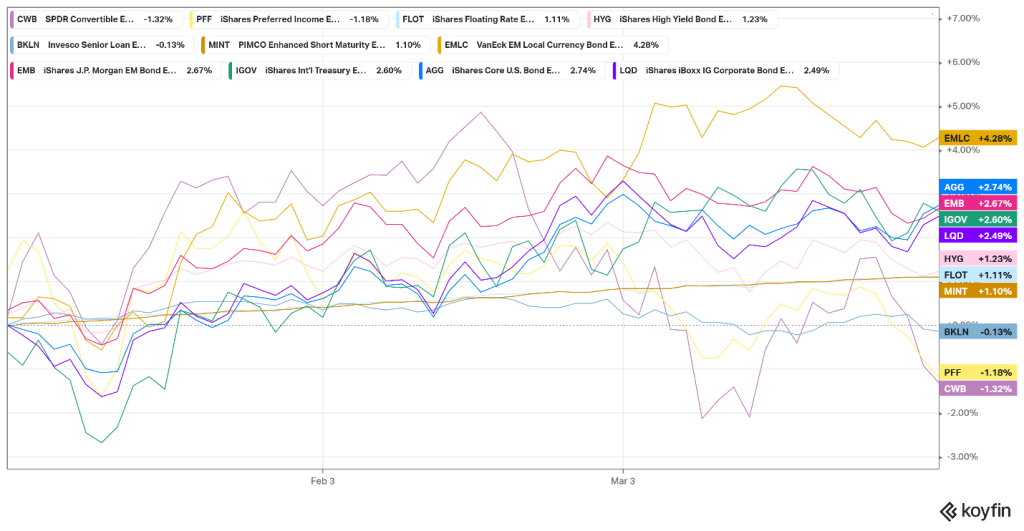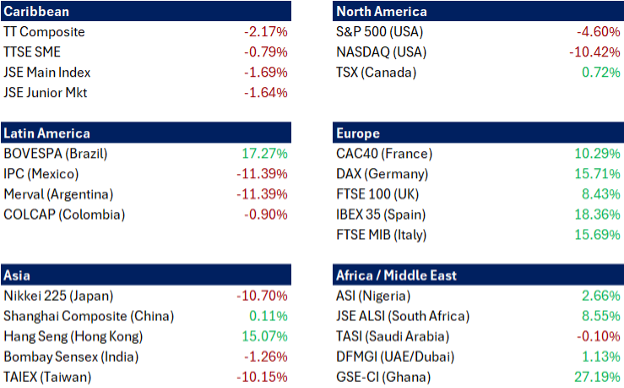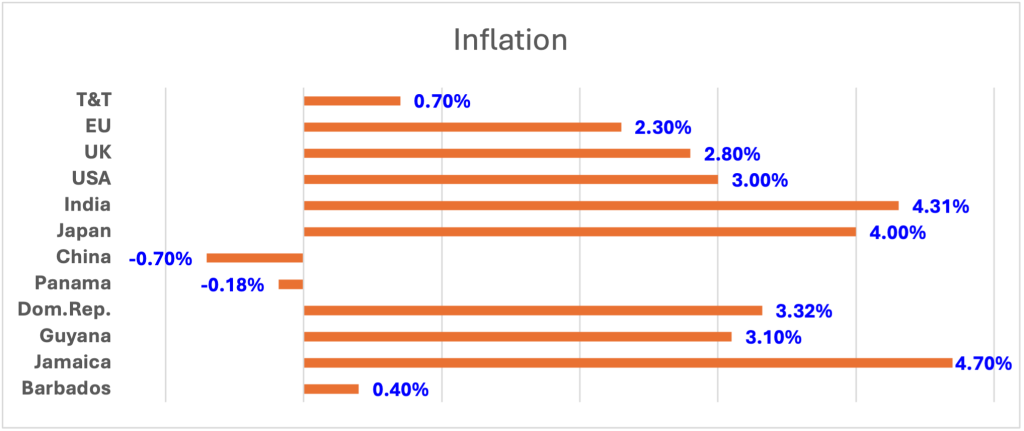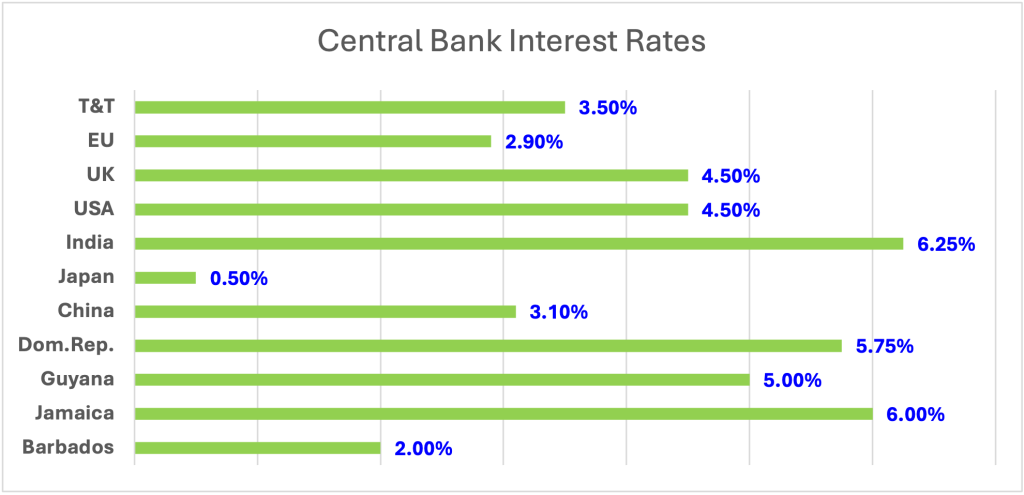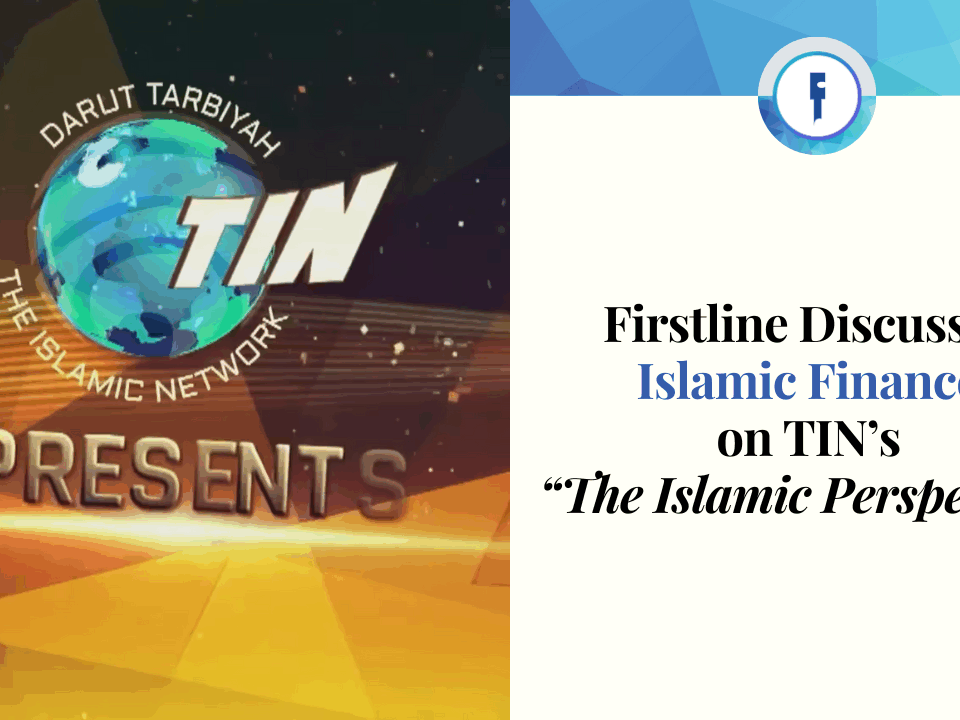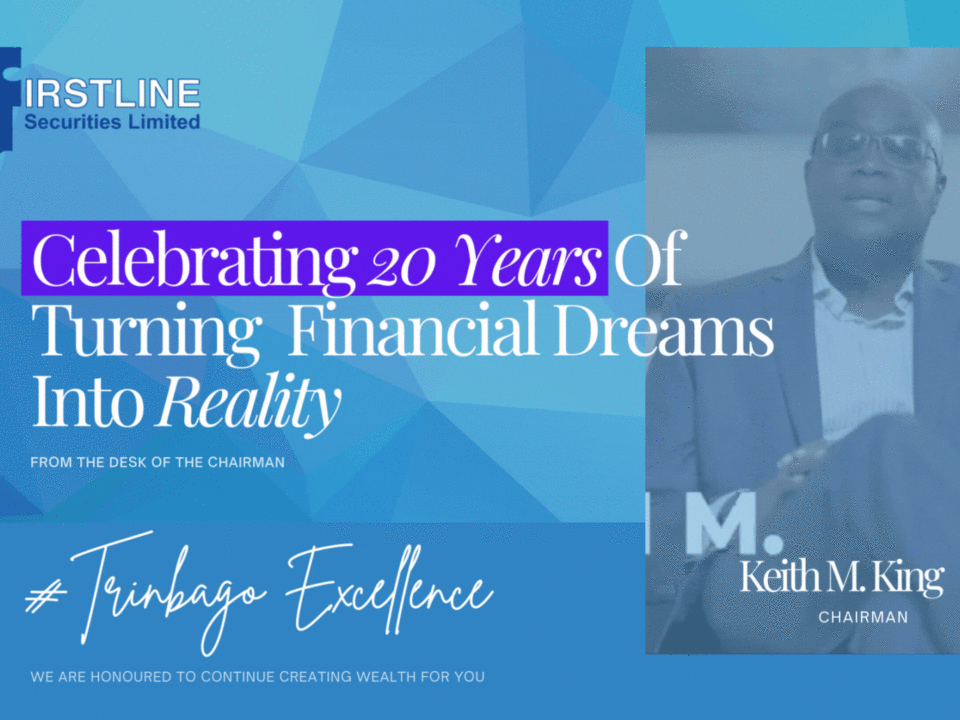Global equity markets had a dynamic start to 2025.
In the U.S., the year opened strong, but volatility emerged following a surprise from China. DeepSeek, a lesser-known Chinese AI startup, unveiled a model rivalling the performance of Google’s Gemini and OpenAI’s ChatGPT—while using only a fraction of NVIDIA’s high-end chips. This challenged investor assumptions around massive infrastructure investments in semiconductors and data centres, which had fuelled tech stock gains in late 2024.
This disruption was compounded by aggressive trade rhetoric from the newly inaugurated U.S. president, including pointed remarks at traditional allies like Canada, Mexico, and the European Union. As a result, sectors previously seen as sure bets, like chips and defence, faced sudden uncertainty. For investors—even those here in Trinidad and Tobago—this is a critical reminder: AI and tech leadership may be more contested than previously thought, and the geopolitical landscape directly shapes which sectors thrive. Staying nimble matters.
Closer to home, Caribbean equities experienced modest declines overall. The TTSE SME Index led regional performance, posting a smaller loss compared to other indices in T&T and Jamaica. Standout performers included LJ Williams Class B, which gained 20%, while Guardian Media Ltd fell by the same margin. JMMB Group Ltd was up 14%, partly thanks to its stake in Sagicor’s Canadian-listed shares, which jumped 26.29%.
A significant market event was ANSA McAL’s announcement to suspend dividend payments for the next three years as it embarks on an ambitious campaign to double revenue by 2028 through acquisitions and investment. The market reacted swiftly, with the stock falling 16.39% in just two days. Moves like these aren’t unprecedented in the region, but the scale and suddenness of ANSA’s shift makes it notable. For investors, this raises essential questions about how capital is being deployed and what kinds of long-term strategies are shaping regional blue-chip firms.
In Latin America, Brazil posted a 17.7% gain, benefiting from deepened trade ties with China as buyers begin shifting away from the U.S. for key agricultural and industrial commodities. Mexico, on the other hand, wrestled with renewed trade risk due to U.S. policy threats, and Argentina declined by over 11%, as reform optimism gave way to fresh concerns around implementation. For Caribbean investors with regional business ties or offshore portfolios, Latin America’s divergence is a reminder that trade flows and political narratives can rapidly alter investment appeal—and should not be ignored.
Asia presented a mixed picture. The Hang Seng Index (Hong Kong) rose 15%, but China’s Shanghai Composite edged up only 0.11%, reinforcing the view that market confidence within China remains fragile. Japan and Taiwan both fell roughly 10%, with Taiwan particularly affected by DeepSeek’s reveal. These shifts matter because Asia remains a growth driver in manufacturing, semiconductors, and emerging AI ecosystems. Caribbean investors looking for innovation exposure should track not only U.S. tech giants, but also their global challengers.
Europe delivered some of the strongest returns this quarter. Germany (15.71%), Italy (15.69%), and Spain (18.36%) led gains, while France (10.29%) and the UK (8.43%) followed closely. These advances come even amid increasing economic and geopolitical distance from the U.S. For investors, Europe may present a medium- to long-term opportunity, especially as the region ramps up infrastructure, defence, and manufacturing investments in pursuit of greater autonomy on the global stage.
In Africa and the Middle East, Ghana outpaced nearly every global market with a remarkable 27% gain, driven by strong financial sector performance and sustained macroeconomic recovery following its debt restructuring. South Africa returned 8.55%, while Nigeria’s 2.66% reflected a more restrained recovery amid political and fiscal challenges. Dubai posted a 1.13% gain, while Saudi Arabia edged down slightly by –0.10%. These returns may seem distant, but for investors eyeing commodity exposure, infrastructure funds, or Africa-focused ETFs, they signal which economies are regaining stability and where future capital may flow.


